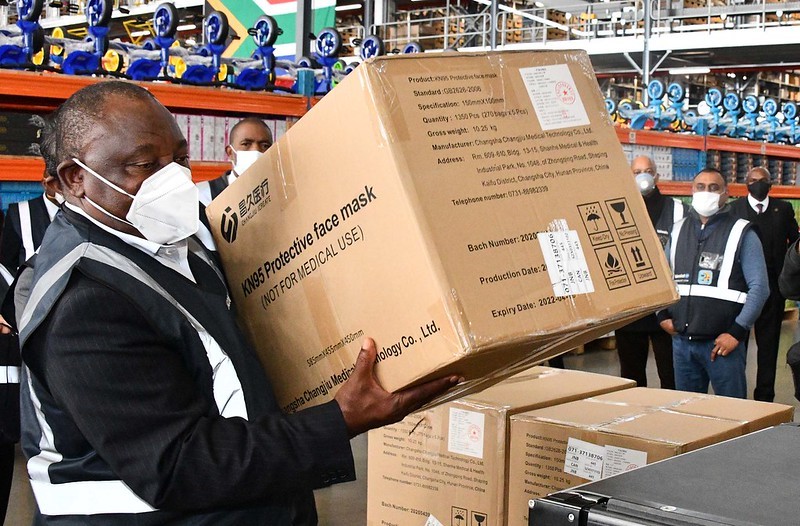
A survey study across seven low- and middle-income countries (LMICs) from late 2020 through 2021 reveals that that only 43% of healthcare facilities had sufficient personal protective equipment (PPE) stock to comply with the COVID-19 pandemic safety guidelines as defined by the World Health Organization (WHO). The study was published yesterday in PLOS One.
The phone-based survey included 1,554 health facilities in Bangladesh, Burkina Faso, Guinea, Nigeria, Guatemala, Liberia, and Malawi, conducted from August 2020 to December 2021. Participating facilities were asked to take stock of PPE on the survey date. Overall 21% of healthcare facilities were in urban locations, 7% were peri-urban, and 72% were rural.
Forty-six percent of facilities did not have respirators, and 16% did not have any gloves, the authors said. "PPE availability was notably low in Guinea, Bangladesh, and Nigeria, where fewer than 70% of health facilities have all the recommended PPE," the authors said. "The shortage was particularly severe for respirators and masks."
The WHO recommends six pieces of PPE to protect against COVID-19, including a medical mask, eye protection (goggles) or facial protection (face shield) to avoid contamination of mucous membranes; a clean, non-sterile, long-sleeved gown; and gloves. Those performing aerosolizing procedures should also wear respirators, such as N95 or FFP2s.
Only 61% had enough PPE for COVID treatment
However, in the LMICs surveyed the complete PPE set was available in only 64% of the health facilities, but, when the items were available, stocks were usually too low to supply all workers, the authors said. "Even when all items were available, healthcare workers treating COVID-19 suspected patients were reported to wear all the recommended equipment in only 61% of health facilities," they wrote.
The shortage was particularly severe for respirators and masks.
"While efforts were made to accelerate and enhance the production and dissemination of PPE globally, the availability of the equipment continued to require critical attention in many LMICs," the authors concluded.
 The US medical and public health communities should work together to combat online health misinformation through sustainable investments in media monitoring and counter messaging, according to a Harvard Medical School–led research team.
The US medical and public health communities should work together to combat online health misinformation through sustainable investments in media monitoring and counter messaging, according to a Harvard Medical School–led research team. The European Centre for Disease Prevention and Control (ECDC)
The European Centre for Disease Prevention and Control (ECDC)  Gonorrhea infections in China are showing decreasing susceptibility to ceftriaxone along with high levels of resistance to other antibiotics, according to a
Gonorrhea infections in China are showing decreasing susceptibility to ceftriaxone along with high levels of resistance to other antibiotics, according to a 









